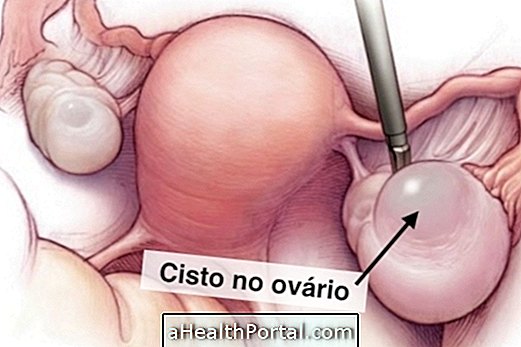Molar pregnancy can bring severe complications to a woman's health because it can lead to cancer, called gestational trophoblastic neoplasia, if clinical abortion or curettage is not able to completely eliminate fetal remains.
There is suspicion of gestational trophoblastic cancer when there are symptoms such as increased uterus, vaginal bleeding and cysts in the ovaries, can. However, almost half of the women affected do not have any symptoms. The diagnosis of this type of cancer is usually made through the high beta HCG or the appearance of metastasis, more common in the lung or in the genital region.

Molar pregnancy, pregnancy in spring or hydatidiform mole, is a rare condition where during fertilization there is a genetic error and the fetus does not receive pairs of chromosomes coming from the mother, only from the father, causing the fetus to have only a tangle of cells or there are severe changes in the placenta that do not allow for proper oxygenation and nutrition of the fetus.
In the case of a molar pregnancy, the woman initially presents the classic signs of pregnancy, but there is a suspicion of molar pregnancy when a Beta HCG concentration is much higher than expected for gestational age and bleeding may occur between the 6th and 16th week of gestation . Its diagnosis is made through Beta HCG and ultrasonography.
Learn more about spring pregnancy.
How To Treat Molar Pregnancy
A spontaneous abortion should occur at about 6 or 8 weeks of gestation because the development of the embryo is not possible. If molar pregnancy has been discovered prior to miscarriage it is necessary to induce abortion with the use of abortion medications prescribed by the gynecologist or obstetrician, or uterine aspiration should be performed to ensure that the uterus is properly cleaned.
Uterine aspiration is more indicative than curettage because some women even after curettage may remain with cells of the embryo inside the uterus and they may become a malignant tumor depending on each case. If she is diagnosed with a malignant tumor, the treatment should be performed on the basis of chemotherapy and / or surgery to remove the uterus or fallopian tubes if they are also affected.
After the initial treatment the woman should be followed for 1 year undergoing the test to evaluate the Beta HCG because if they remain even if tiny traces of the spring inside the uterus, there will be an increase of this hormone, which means that a new curettage is necessary to clean completely the uterus.
When can you get pregnant again?
After removal of the uterus and woman's spring it should be followed for 1 year and only after this time will the obstetrician be able to indicate that attempts at pregnancy can be resumed. Some doctors find it safer just to try to get pregnant after 6 months after your hCG level has returned to normal.
During this time the woman may use condoms, implants or contraceptive pills, for example.























